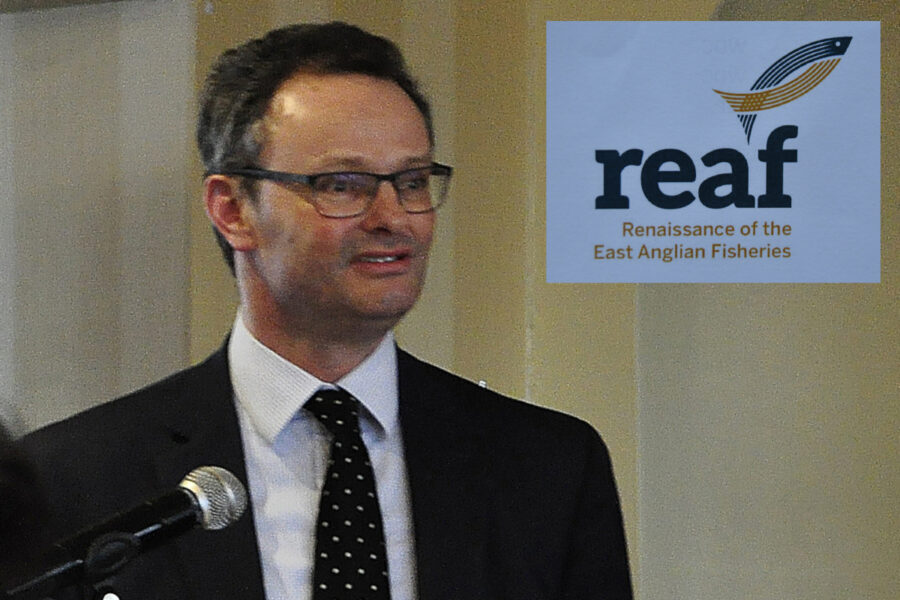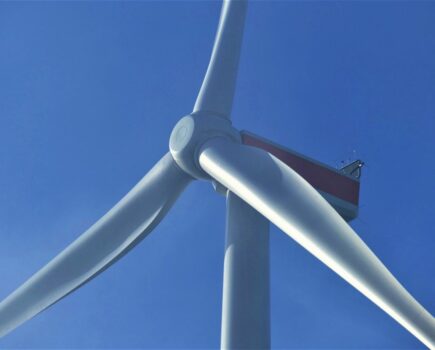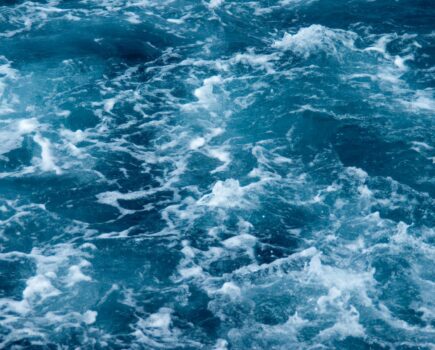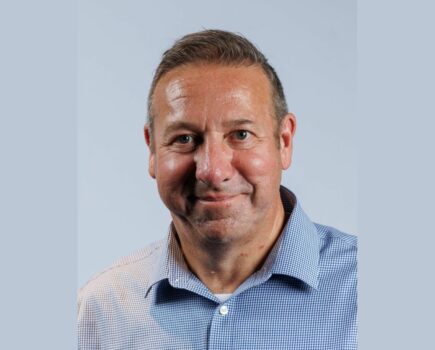Big opportunity after Brexit, says REAF
Brexit could provide the opportunity to increase UK vessel quota catches in the southern North Sea by seven times their value, and UK vessel non-quota catches by 25%, reports Tim Oliver
That would add 25 or more vessels to the UK fleet, and up to 13,300 additional tonnes of catch per year, creating jobs both offshore and onshore.
The total reported value of the catch of commercial species from the southern North Sea has, in recent years, varied between £190m and £260m – but only between 7% and 8% is landed by the UK fleet.
Main image: Lowestoft MP Peter Aldous, a member of the REAF group
There should be a single management authority in East Anglia to replace current MMO and IFCA management.
These are some of the conclusions of a study looking at how to revitalise the fishing industry in East Anglia, which was launched last month.
The study has been produced by Renaissance of East Anglian Fisheries (REAF), a community-led group that has come together to produce a long-term strategy for fishing in the region.
It points out that although East Anglia sits next to one of the richest fishing regions in Europe, very little local benefit is currently derived from it.
Lowestoft MP Peter Aldous, a member of the REAF group, told MPs during a debate on the report: “At present, we have a system that not only brings very little benefit to the East Anglian fishing industry, but is extremely environmentally damaging.
“This study’s main finding is that the UK’s departure from the CFP provides a remarkable opportunity to bring about a renaissance of East Anglian fisheries.
“However, that will be achieved only if our leaving the EU is accompanied by well-designed national policy and regulation that provide the framework for regional strategies such as REAF.”
He said it was vital that zonal attachment, and a requirement to land fish in the UK, are the basis of any future agreement with the EU.
Such a change would mean that the UK would benefit by between £28m and £34m from the sevenfold greater allocation of quota stocks from the southern North Sea. This would include an eightfold volume increase in sole, a tenfold increase in herring and an elevenfold increase in plaice.
Economic links rules for flagships should be strengthened to promote the landing of fish into UK ports, says REAF.
These changes would also benefit jobs and the economy further downstream from the catching sector. Peter Aldous said that while the REAF report is tailored to East Anglia, similar studies could be undertaken to benefit coastal communities anywhere in the country.
REAF was formed in 2018 as a partnership between the regional industry, East Suffolk Council, Suffolk County Council, Norfolk County Council, the New Anglia local enterprise partnership, Seafish and Associated British Ports. Funding was provided by the participating councils, Seafish and the EMFF, via the MMO.
11 recommendations
The REAF strategy makes 11 recommendations, which fall into three categories of change – economic, environmental and regulatory:
- Introducing a new system of control in the inshore fleet based on hours-at-sea restrictions and on the use of gear
- Requiring the offshore fleet to land its catch in the UK, and restricting it from fishing within 12 nautical miles of the coast
- Combining the MMO and Eastern IFCA into a new single East Anglia regional fisheries authority
- Considering restricting offshore vessels to 500hp, and banning beam trawling
- Investing in a regional hub fishing port in Lowestoft
- Providing access to finance for the scaling-up and automation of the processing sector
- Upgrading the control regime for anglers
- Removing barriers to aquaculture expansion by de-risking developments and improving access to finance
- Setting up an apprenticeship scheme
- Managing fishing stocks as a mixed fishery, and introducing more effective controls over fishing mortality
- Making more use of data to manage potential conflicts between fishermen and other marine activities, such as wind farms and dredging.
Peter Aldous stressed that the REAF study is not just academic research, but sets out ‘a range of practical recommendations that, if implemented, could bring significant benefits to local people, communities and businesses’.
“We need to get Brexit done, so that we can get on with putting in place strategies such as REAF,” he said.
He called for DEFRA to work with the REAF team to start implementing the recommendations, and for ‘seedcorn funding’ for the project.
He asked for the pilot scheme on time-at-sea management to replace quotas, that DEFRA has said it will undertake after Brexit, to take place in East Anglia.
Also needed were an apprenticeship scheme, and for Lowestoft to ‘regain its crown as the capital of the southern North Sea’ with new facilities, he said.
He added that there would also be a need for investment in the processing sector, not just in East Anglia but nationally.
Minister welcomes REAF work
Fisheries minister George Eustice welcomed the REAF report and said that he was ready to work with Peter Aldous in the future.
On an effort-based pilot scheme, he said that this was sometimes more appropriate for smaller inshore vessels because they have small quotas for a large range of stocks, and ‘a quota system does not work that well for them’. But he added that there were drawbacks, and that a pilot in Ramsgate about seven years ago ‘was not particularly successful’. Nevertheless, “I am open to doing it,” said the minister.
Turning to foreign vessels fishing inside the 12-mile limit, and the need for their catches to be landed in the UK, the minister said that after Brexit, the 0-12-mile zone would be ‘predominantly reserved for British vessels, and we will seek to restrict the access of foreign vessels to those waters’.
He said that the economic link was under review, and changes could include requiring vessels to land a greater proportion of their catch in the UK.
Funding could be provided through the new domestic maritime fund, set up ‘precisely to support fish processing and harbour and port facilities, to help projects such as that under discussion’.
On the proposal to combine the MMO and Eastern IFCA to form a regional management authority, George Eustice said that there was a case for their efforts to be ‘more closely’ joined up. The Joint Maritime Operations Co-ordination Centre had been formed so that ‘everybody – from the coastguard to the MMO and IFCAs – can work together to co-ordinate their assets in a single approach to the issue of enforcement’.
He supported better management of mixed fisheries, and said that CEFAS in Lowestoft had done some ‘groundbreaking work’. The UK was keen to pursue this approach, he said.
With regard to funding, he said he could not give any ‘cast-iron assurances’ that DEFRA would support any application, but guaranteed it would be given ‘full consideration’.
Essex quota concerns
Leigh-on-Sea fisherman Paul Gilson is somewhat bemused by the new quotas that have been announced for his part of the Essex coast, reports John Periam.
“The announcement of next year’s quotas beggars belief, with three stocks that stick out: spurdog, skate and sole,” he said. “Currently, the area is awash with skate and spurs, to the point that in many areas, it is impossible to fish for sole without filling up with them. Skate is being reduced, and spurs remain closed.
“Dover sole, on the other hand, is being increased by 40%, which frankly makes no sense whatsoever. Surely the poor state of the stocks in area 4c is now being passed on. As a result, I am confident that the landing figures will clearly support my claims. You can add to this list the new plaice quota, which has also been increased, when sadly we don’t see the quantity we used to catch in the past.”
Paul Gilson has aired his concerns about this issue in the past. “I will say it again – the quota shortage for inshore boats was down to two mistakes, that were never corrected, by the Ministry of Agriculture, Fisheries and Food (MAFF). The shortage of fish is perhaps more complex, due to the fishing effort, which currently is at an all-time low in the Thames and on the east coast. By this I mean that we should be awash with fish; however, it has all but ceased. The principle of conservation zones works on reduction or cessation of a fishing effort – therefore, the east coast should be seeing an upsurge in stocks, which has not happened other than with skate and spurdog. I also feel we can rule out bass, as this was a fish that has witnessed political interference.”
He added: “If we take the scientific advice that the quotas are based on (if it is true and not politically adjusted, as with the bass), we in fact do have a major environmental problem on the east coast, with no abundance of fish, which proves beyond doubt that this fishery is still collapsing. A 40% increase in the sole quota does not relate to what is being seen and caught by the few remaining fishermen who fish in this area.”
There have also been concerns regarding dredging in the area, wind farms and seabed cables. These still worry many, and Paul Gilson wonders if enough effort is being made by those involved to bring these issues to the fore. “Conservation is important, and I agree 100% with this. However, if it is going to affect quotas for 2020, we need to be sure that the proposed figures are right. It is hard enough for many of us to make a living now out of fishing, and we need to encourage youngsters to come into this declining industry. If this is the case, let’s get our facts right and get the proposed new quotas set at a level that will work, and please all.”








